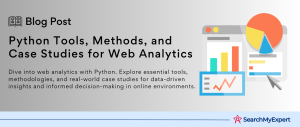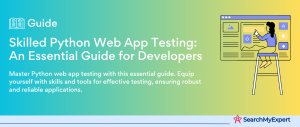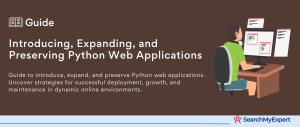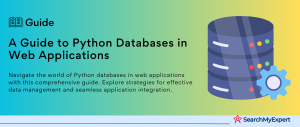Backend Web Development: Its Critical Role in Web Applications
In the dynamic world of web development, the seamless interaction between the front end and backend plays a pivotal role in creating an effective online presence. Backend development, often overshadowed by the visually appealing front end, is the backbone of web applications, ensuring their functionality, reliability, and security.
What is Backend Development?
Backend development refers to the server-side of a web application, the part you don’t see but is integral to the functioning of a website. It’s where the logic of the web application is implemented, and it acts as the link between the website’s frontend and the database. Backend development involves a range of tasks including writing APIs, creating libraries, working with system components, and handling database operations. This hidden layer of architecture is responsible for storing and organizing data, and ensuring everything on the client-side (frontend) works seamlessly.
Responsibilities of a Backend Developer
A backend developer is tasked with building and maintaining the technology that powers these components, which include:
- Database Management: Backend developers design, manage, and maintain databases to ensure smooth data storage and retrieval.
- Server-Side Logic: They are responsible for developing the logic that drives the core functionalities of the web application.
- API Integration:
Creating and managing APIs that allow the frontend of the application to access the backend data efficiently. - Security Measures:
Ensuring the security of the web application by implementing robust security protocols to protect sensitive data. - Performance Optimization: Constantly monitoring and improving the performance of the web application for a seamless user experience.
Backend vs. Frontend Development: A Comparative Overview
While backend development focuses on server-side development, frontend development is centered around the user interface and experience of a web application. Frontend developers design the visual aspects of a website, including the layout, graphics, and interaction features. They use technologies like HTML, CSS, and JavaScript to bring the design to life.
Why Python for Backend Development
Python, a high-level programming language known for its simplicity and readability, has become a leading choice for backend development. Its unique features and powerful ecosystem offer numerous advantages for developing server-side applications. Let’s dive into why Python stands out as a preferred language for backend tasks.
Advantages of Using Python for Backend Development
- Simplicity and Readability: Python’s syntax is designed to be intuitive and straightforward, mimicking the natural language. This simplicity makes Python an ideal language for beginners and experts alike, facilitating quick learning and implementation.
- Versatile Frameworks:
Python offers a range of robust frameworks like Django and Flask which simplify the development of complex web applications. These frameworks come with numerous built-in features, reducing the need for additional coding and speeding up the development process. - Large and Supportive Community:
Python has a massive global community, providing extensive support, tutorials, and documentation. This makes finding solutions and learning resources easier for developers at all levels. - Extensive Libraries and Tools: Python’s rich set of libraries and tools enhances its functionality. Libraries like NumPy, Pandas, and SQLAlchemy, cater to various backend needs like data analysis, database operations, and data science, making Python incredibly versatile.
- Integration Capabilities:
Python seamlessly integrates with other languages and technologies, which is crucial for backend development that often requires working with different systems and interfaces.
Python’s Features: Enhancing Backend Development
- Cross-Platform Compatibility:
Python’s ability to run on multiple platforms including Windows, Linux, and MacOS is a significant advantage. This cross-platform compatibility ensures that Python-based applications can operate in diverse environments. - Dynamic Typing:
Python’s dynamic typing capability reduces the amount of boilerplate code, making it easier to write and maintain large codebases. - Efficient Error Handling:
Python’s syntax and runtime error handling make debugging a more manageable task, allowing for a smoother development process.
Getting Started with Python
Embarking on a journey with Python, renowned for its simplicity and power, is an exciting venture for any aspiring backend developer. Understanding the basic syntax, data types, and the wealth of resources and tools available is crucial in leveraging Python’s capabilities for backend development.
Basic Python Syntax and Data Types
Python is celebrated for its clean, readable syntax, which is easy to grasp for beginners. Here’s a brief overview:
- Variables and Data Types:
Python supports various data types like integers, floats (decimal numbers), strings (text), and booleans (True/False). Variables in Python are created when you assign a value to them, for example, x = 10 or name = “Alice”. - Control Structures:
Python uses standard control structures like if, elif, and else for decision-making. Loops like for and while are used for iteration. - Functions:
Functions in Python are defined using the def keyword. They are essential for code reusability and organization. - Lists and Dictionaries:
These are the primary data structures. Lists are ordered and mutable, whereas dictionaries are unordered and contain key-value pairs.
Resources for Learning Python Fundamentals
For beginners and those looking to brush up their Python skills, numerous resources are available:
- Online Courses:
Platforms like Coursera, Udemy, and edX offer comprehensive Python courses covering basic to advanced concepts. - Interactive Tutorials: Websites like Codecademy and Khan Academy provide interactive Python tutorials for hands-on learning.
- Documentation and eBooks: Python’s official documentation is an excellent resource. Free eBooks like “Automate the Boring Stuff with Python” can also be beneficial.
- Community Forums:
Platforms like Stack Overflow and Reddit’s r/learnpython are great for community support and problem-solving.
Essential Python Libraries and Tools for Backend Development
Python’s strength lies in its vast array of libraries and tools that cater to various aspects of backend development:
- Django:
A high-level Python Web framework that encourages rapid development and clean, pragmatic design. It’s ideal for building scalable web applications. - Flask:
A micro web framework for Python, Flask is excellent for small to medium applications and includes the necessary tools and libraries. - NumPy and Pandas:
These libraries are pivotal for handling numerical and data operations, which are often required in backend processes. - SQLAlchemy:
An SQL toolkit and Object-Relational Mapping (ORM) library for Python, it provides a full suite of well-known enterprise-level persistence patterns. - Git:
Knowledge of Git for version control is essential for any backend developer. It aids in tracking changes and collaborating with other developers.
Building a Backend Application with Python: A Step-by-Step Guide
Developing a backend application with Python is a structured process that involves several key steps. Each step plays a crucial role in ensuring the application is functional, secure, and scalable. This guide breaks down the development process and highlights essential concepts and best practices.
Requirement Analysis and Planning
Before diving into coding, understand the application’s requirements. Define the scope, identify the target audience, and determine the functionalities needed.
Setting Up the Development Environment
Choose a Python version and set up a virtual environment. This isolated environment allows you to manage dependencies effectively.
API Design
API (Application Programming Interface) acts as a bridge between the front end and backend. Define the endpoints, request-response structure, and HTTP methods (GET, POST, PUT, DELETE) for your API.
Database Integration
Choose a database that fits the application’s needs (SQL or NoSQL). Use Python libraries like SQLAlchemy for database integration and manage data models effectively.
Implementing Routing
Routing directs users to different pages based on their requests. Frameworks like Django and Flask offer tools for efficient URL routing.
Best Practices for Secure and Scalable Development
- Code Readability and Maintainability: Write clean, well-commented code for ease of maintenance and updates.
- Security Measures:
Implement security practices like HTTPS, data encryption, and regular security audits to protect sensitive information. - Scalability Considerations: Design your application with scalability in mind. This includes using load balancers, optimizing databases, and ensuring stateless application design.
- Performance Optimization:
Regularly monitor and optimize the performance of your application.
This includes optimizing queries, caching, and using asynchronous programming where applicable. - Continuous Integration/Continuous Deployment (CI/CD): Implement CI/CD pipelines for automated testing and deployment, ensuring smoother and faster release cycles.
Popular Python Frameworks for Backend Development: Django vs Flask
Python boasts a variety of frameworks that cater to different needs and complexities in backend development. Two of the most prominent frameworks are Django and Flask. Understanding their strengths, weaknesses, and suitable use cases is crucial for backend developers to make informed decisions.
Django: The Full-Stack Framework
Django is often referred to as a ‘batteries-included’ framework due to its comprehensive nature. It follows the DRY (Don’t Repeat Yourself) principle and emphasizes rapid development.
Strengths:
- Robustness:
Django is equipped with numerous built-in features, including an ORM (Object-Relational Mapping), admin panel, and authentication modules. - Scalability:
It’s designed to handle high traffic and complex data operations, making it ideal for
large-scale applications. - Security:
Django has built-in protection against common security threats like SQL injection, CSRF (Cross-Site Request Forgery), and XSS (Cross-Site Scripting).
Weaknesses:
- Steep Learning Curve: For beginners, Django can be overwhelming due to its vastness and convention over configuration approach.
- Less Flexibility:
The ‘batteries-included’ approach might be restrictive for developers who prefer more control over their development environment.
Flask: The Microframework
Flask is a lightweight, micro web framework known for its simplicity and flexibility. It provides the basics and leaves the rest to the developer, allowing more control over components.
Strengths:
- Flexibility: Flask provides the essentials to start a web application, offering developers the freedom to use preferred tools and libraries.
- Ease of Learning: Its simplicity and straightforward nature make Flask more accessible to beginners.
- Suitable for Small to Medium Projects: Flask is ideal for smaller projects or when a lightweight, customizable approach is required.
Weaknesses:
- Limited Built-In Features:
Unlike Django, Flask doesn’t provide an ORM or other advanced functionalities out-of-the-box. - Scalability:
While Flask can handle growth, it might require more work to scale effectively compared to Django.
Choosing Between Django and Flask
- Use Django if you are developing a large-scale application with complex data handling needs and require a feature-rich framework.
- Opt for Flask if you prefer starting with a minimalistic, flexible foundation for a smaller project or if you require specific customizations.
Resources for Learning and Building Projects
Django:
- Official Documentation: Start with Django’s comprehensive official documentation.
- Tutorials:
Websites like Real Python offer in-depth Django tutorials. - Courses: Platforms like Udemy and Coursera provide structured Django courses for all levels.
Flask:
- Official Documentation: Flask’s official documentation is an excellent starting point.
- Tutorials:
Follow Flask tutorials on websites like Full Stack Python. - Courses:
Online learning platforms also offer Flask-specific courses to guide you through the basics to advanced topics.
Debugging and Deploying Python Applications
The final stages in backend development involve debugging and deploying your Python application. Mastering these aspects is crucial for delivering a robust, high-performance application. This guide covers common debugging techniques, various deployment options, and best practices for a successful deployment.
Debugging Python Applications
Debugging is an essential process to identify and fix issues or bugs in your code. Here are some common debugging techniques and tools in Python:
- Print Statements: A simple yet effective way to debug. Insert print statements in your code to display the values of variables and the flow of execution.
- Integrated Development Environment (IDE) Debuggers:
Most Python IDEs, like PyCharm or Visual Studio Code, have built-in debuggers that offer features like breakpoints, code stepping, and variable inspection. - Logging:
Using Python’s logging module to record the software’s runtime activities can help in tracking down hard-to-find bugs. - PDB (Python Debugger):
Python’s interactive source code debugger allows you to set breakpoints, step through code, inspect stack frames, and evaluate expressions. - Third-Party Tools:
Tools like Sentry for error tracking and monitoring can be integrated into your application for real-time bug tracking.
Deployment Options for Python Applications
Deployment is the process of making your application available to the end users. Here are some popular deployment options:
- Cloud Platforms:
AWS, Google Cloud, and Azure offer reliable cloud hosting services with scalability and robust infrastructure. - Virtual Servers:
Using virtual servers like DigitalOcean or Linode provides more control over the hosting environment. - Platform as a Service (PaaS): Services like Heroku and PythonAnywhere are user-friendly for beginners and automate many of the deployment and server management tasks.
- Docker Containers:
Containerizing your application with Docker is an efficient way to ensure it runs consistently across different environments.
Resources and Best Practices for Secure and Reliable Deployments
- Automated Testing:
Before deployment, ensure comprehensive automated testing (unit tests, integration tests) to detect and fix bugs. - Continuous Integration/Continuous Deployment (CI/CD): Tools like Jenkins, Travis CI, and GitHub Actions can automate testing and deployment processes.
- Security Best Practices: Implement HTTPS, use environment variables for sensitive information, and regularly update dependencies to mitigate security vulnerabilities.
- Performance Optimization:
Monitor and optimize your application’s performance using tools like New Relic or Datadog. - Scalability: Prepare for scaling your application by using load balancers, caching mechanisms, and ensuring your database can handle increased loads.
- Documentation and Resources:
- AWS Deployment Guide:
AWS provides documentation for deploying Python applications. - Heroku Python Guide:
Heroku offers a comprehensive guide for Python deployment. - Docker Documentation: Docker’s official documentation is invaluable for containerization.
Harnessing Python for Backend Development
In the journey through Python for backend development, we’ve explored the robust, versatile nature of Python and how it stands as a cornerstone in the world of web development. Let’s encapsulate the key takeaways and provide resources for further growth and exploration in this field.
Key Takeaways
- Python’s Simplicity and Versatility:
Python’s easy-to-understand syntax and readability make it an excellent choice for backend development, appealing to both beginners and seasoned developers. - Frameworks and Tools:
With frameworks like Django and Flask, Python offers flexibility and robustness, catering to a wide range of project sizes and complexities. - Backend Application Development Process: We’ve broken down the development process into manageable steps, from requirement analysis to deployment, emphasizing the importance of debugging and best practices for secure, scalable applications.
- Popularity and Community Support: Python’s immense popularity in the web development community and its growing demand in the job market make it a valuable skill for developers.
Resources for Further Learning and Exploration
- Online Learning Platforms:
Websites like Pluralsight, Codecademy, and LinkedIn Learning offer in-depth courses in Python and backend development. - Project Ideas:
Building projects like a blog application, a REST API, or a data-driven web app can reinforce learning and enhance your portfolio. - Open Source Contributions:
Engaging with open-source Python projects on platforms like GitHub can provide practical experience and community interaction. - Python Communities:
Join Python communities on Reddit, Stack Overflow, or local meetups to stay updated with the latest trends and get support. - Books and eBooks:
Books like “Python Crash Course” and “Fluent Python” are excellent for deepening your Python knowledge.
Conclusion:
Embarking on the path of Python backend development opens a world of opportunities. This comprehensive guide has provided the insights and tools necessary to start this journey. With the simplicity and power of Python, coupled with its rich frameworks and community support, you’re well-equipped to build efficient and dynamic backend solutions. Keep exploring, learning, and building, and watch as your skills in Python backend development grow, unlocking new potentials in the ever-evolving world of web technology.
Unlock new potentials with innovative Python Development Service Agencies.
Table of Contents
Toggle






